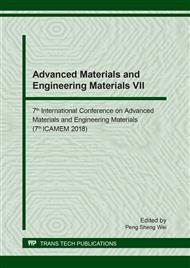p.316
p.322
p.327
p.333
p.339
p.344
p.350
p.356
p.361
SMAW Electrodes Selection for Producing Hard-Faced Layer on FC25 Cast Iron Surface
Abstract:
A shielded metal arc welding (SMAW) using various covered electrodes applied to produce a hard-faced weld metal on FC25 gray cast iron bare surface. It found that all welding parameters such as 3 electrode types and welding currents of 90-130 A were able to produce a sound weld metal without a defect that could deteriorate the joint strength. The white cast layer thickness that was formed at the interface between the weld metal and the base metal was increased when increasing in the welding current and the alloying element in the electrode. Impact strength tended to increase when the alloying element such as chromium (Cr), molybdenum (Mo), and manganese (Mn) was existed, and it showed the maximum impact strength when H600 electrode was applied. In a comparison of microstructure characteristics of the joints, the joint that showed the maximum impact strength had the formation of fine needle-like grain in the weld.
Info:
Periodical:
Pages:
339-343
Citation:
Online since:
August 2018
Authors:
Keywords:
Price:
Сopyright:
© 2018 Trans Tech Publications Ltd. All Rights Reserved
Share:
Citation:


